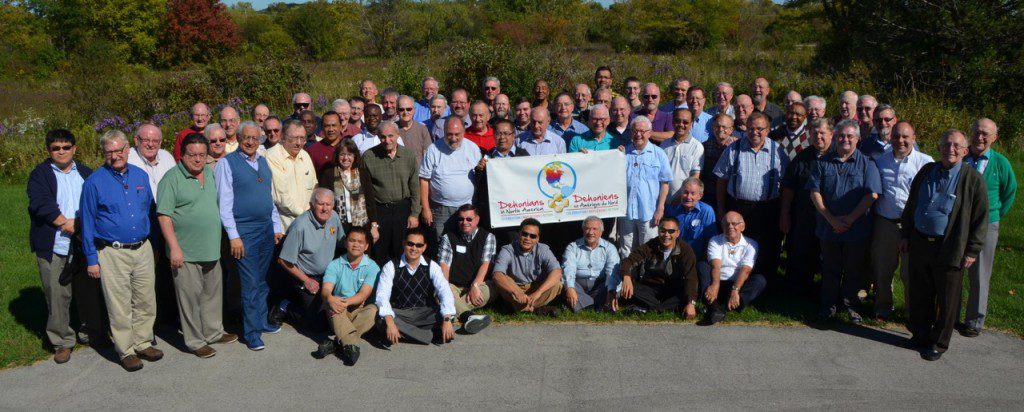
Click here to view more photos
General visitation concludes with conference
It may have been the NORTH AMERICAN Continental Conference but it reflected an internationality that went well beyond Canada and the United States. SCJs from Africa, South America, Europe and Asia were among those in the conference room not only as guests but primarily as fellow SCJs of the Canadian Region and US Province.
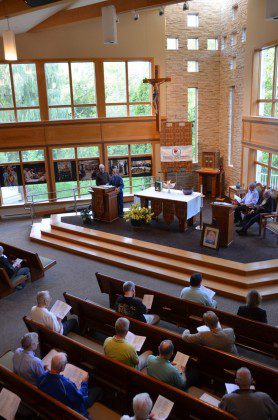
Among them was Fr. Gustave N’dotoni Lulendo, a Congolese member of the Ottawa community; Fr. Zbigniew Morawiec, a Polish SCJ who serves at Our Lady of Guadalupe in Houston; and Fr. Vincent Suparman from Indonesia, a member of the Lower Brule Pastoral Team in South Dakota.
Over a dozen countries were represented among conference participants.
Of course, the participants also included Fr. José Ornelas Carvalho, superior general, and Fr. John van den Hengel, vicar. The North American Continental Conference was the concluding moment of their general visitation of the United States and Canada. At least once in his six-year term a superior general is expected to visit each of the locations of the congregation. North America was Fr. Ornelas’ final stop as he nears the end of his second administration.
A continental conference has been held at the end of each of the visitations. The North American conference took place September 24-27. Participants split their time between the Provincial Conference Center on the grounds of Sacred Heart Monastery/School of Theology and across the road at the newly completed Sacred Heart at Monastery Lake.
“Dehonians in North America: Celebration. Reflection. Action,” was the conference theme.
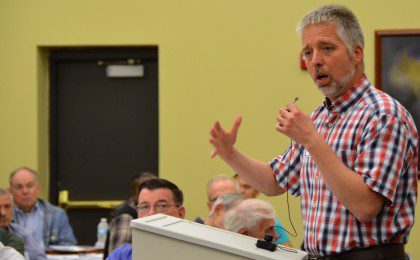
Spirituality and social engagement
Fr. Stefan Tertünte, an SCJ from the German Province, set the tone for the gathering with his opening presentation on “Fr. Dehon’s spirituality and social engagement.”
“Fr. Dehon’s spiritual basis is in an experience of God’s love… a love that inevitably led him to social and political engagement,” said Fr. Stefan. He noted a statement of Fr. Dehon’s from 1910:
“I was led by Providence to walk down various pathways but two of them left a profound impression on me: Christian social action and the life of love, reparation and immolation to the Sacred Heart of Jesus.”
To continue to live the founder’s spirituality in their own lives Fr. Stefan encouraged SCJs to “pray with open eyes” as a way to move “towards the lived union of the spiritual and the social in the tradition of Dehon.”
He added that it is not just HOW SCJs pray that is important, but where they pray. “Pray in proximity to the people, to pray with open eyes you must be able to see something…
“Meditating on the Sacred Heart, the pierced side of the Lord, meditating on his love is quite different if you do it in the proximity of, or with people whose life is pierced, who struggle for hope and for daily bread.
“It’s not only important how we pray, but where we pray, where we live. For us – and for others.”
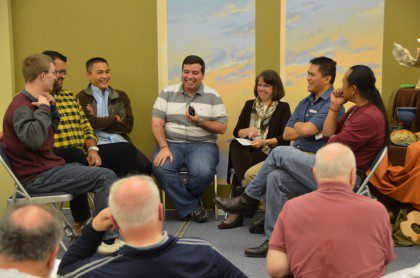
The Priests of the Sacred Heart today
Moving from a reflection on Fr. Dehon to one on the congregation, participants heard from Fr. Ornelas and Fr. John who spoke about the congregation today.
Much of what they shared has been presented at other SCJ gatherings in recent years. The Priests of the Sacred Heart, as are other congregations and the Catholic Church in general, is growing in the southern hemisphere. Provinces and regions that were once led by missionaries now send their own men as missionaries, and not always to places that fit the stereotype of “the missions.”

Fr. Willyans Prado Rapozo is an example. A Brazilian SCJ, he comes from a country which boasts the highest number of SCJs in the congregation. European missionaries began the SCJ presence in Brazil. But now, the roles are reversed and it is Brazil sending its men around the world.
“I always had a dream of being a missionary priest,” said Fr. WilI. “I thought my provincial superior would send me perhaps to Africa or the Philippines.”
But instead, he told those gathered at the conference, “My superior told me that I would be a missionary in CANADA!”
The room broke out in laughter.
“A missionary goes where there is a need, and so I went, and I am very happy,” he said. “We have a good community and we are doing good ministry.” Fr. Will is a part of an international SCJ pastoral team ministering to an international parish in Toronto, St. Thomas More.
Fr. Will is just one example of internationality being lived in North America. The SCJ presence on the Lower Brule and Crow Creek reservations in South Dakota continues primarily because of SCJs from the Indonesian Province: Fr. Vincent Suparman and Fr. Christianus Hendrik (who also serves on the provincial council). In Toronto Fr. Aegidius Warsito fills out the parish team at St. Thomas More with Fr. Will and Fr. Jim Casper. In Houston, a Polish SCJ, Fr. Zbigniew Morawiec, is often at the altar, celebrating the sacraments in Spanish.
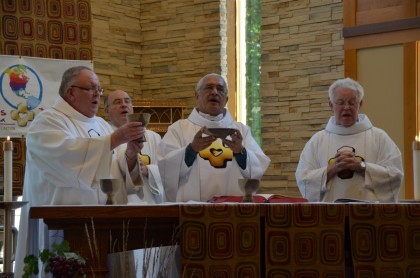
The SCJs in North America
In a setting of prayer, begun with an opening ritual Tuesday evening and ending with a concluding liturgy on Friday, SCJs reflected on their founder, the worldwide congregation, and finally, on who the Priests of the Sacred Heart are and can be in North America.
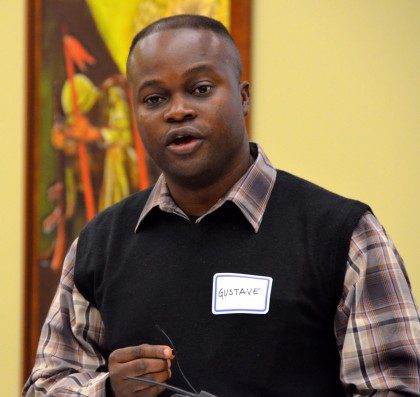
They began in table discussions answering the question “What are the three social realities of our day that most urgently need to be addressed at this time?” Many identified immigration and economic injustice. Other concerns: youth, individualism, violence, a search for greater meaning, relationships, moral values and the impact of communications technology.
Next, participants listened to the voices of the future: the youngest members of the U.S. Province and Canadian Region. In a conversation led by Sr. Cathy Bertrand, SSND, conference facilitator, six young men, including Novice Justin Krenke, talked about what gives them hope in the congregation and what they see as the urgent realities in need of a Dehonian response.
“The fact that we are here and talking about our future is what gives me hope,” said one of the young SCJs. “We are small in number but we can and do affect the lives of so many people. Continuing to do that gives me a lot of hope for our future.”
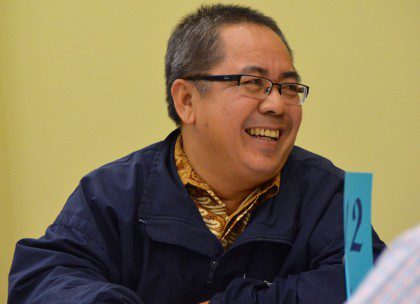
When asked what they viewed as the urgent realities of today, several talked about immigration, as did the larger group the previous day. However, many also emphasized that more effort needs to be placed on youth. Many young people today want to help others, they seek ways of social engagement, but they do not always connect “good works,” such as working in soup kitchens or helping the poor through home-repair, with their faith.
Most important, said another in the discussion, is to be present to youth, to share Dehonian values with them. “We need to make our life and ministry more visibly Dehonian,” said one.
What next?
In the final sessions of the conference SCJs identified ways in which the congregation in North America could respond to the urgent realities noted. Focus was placed on education –– the need to become educated on issues of concern, such as immigration, and then educate others through mass communication, the pulpit and in the many other ways SCJs touch the lives of people.
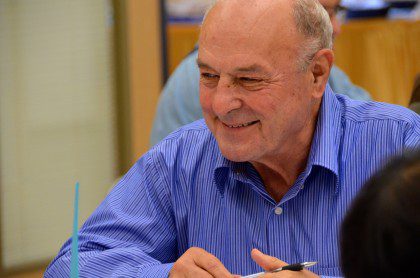
Noting the SCJ-sponsored youth programs in South America, Asia, Africa and Europe, it was suggested that such programs be developed in Canada and the United States with SCJ youth days involving young people from throughout North America.
There is an energy and enthusiasm that builds in gatherings such as the North American Continental Conference. People spend time getting to know each other better, there is sharing and a growing sense of a common bond, a common purpose. Wonderful ideas are exchanged. Possibilities for the future are found in group conversations and in small one-on-one settings.
“But so often that all ends when the last prayer is said and everyone goes home,” said one participant.
To help the work of the conference move beyond the four days that SCJs were together participants had one final table discussion in which they were asked for “next steps.”
The most frequent response? That leadership in North America establish a follow-up committee to the conference.
“Dehonians in North America: Celebration. Reflection. Action” was the conference theme. During the gathering there was much celebration and reflection.
And now, the conference continues as its participants –– the SCJs in North America –– move toward the final part of the theme: action.

Click here to view more photos

